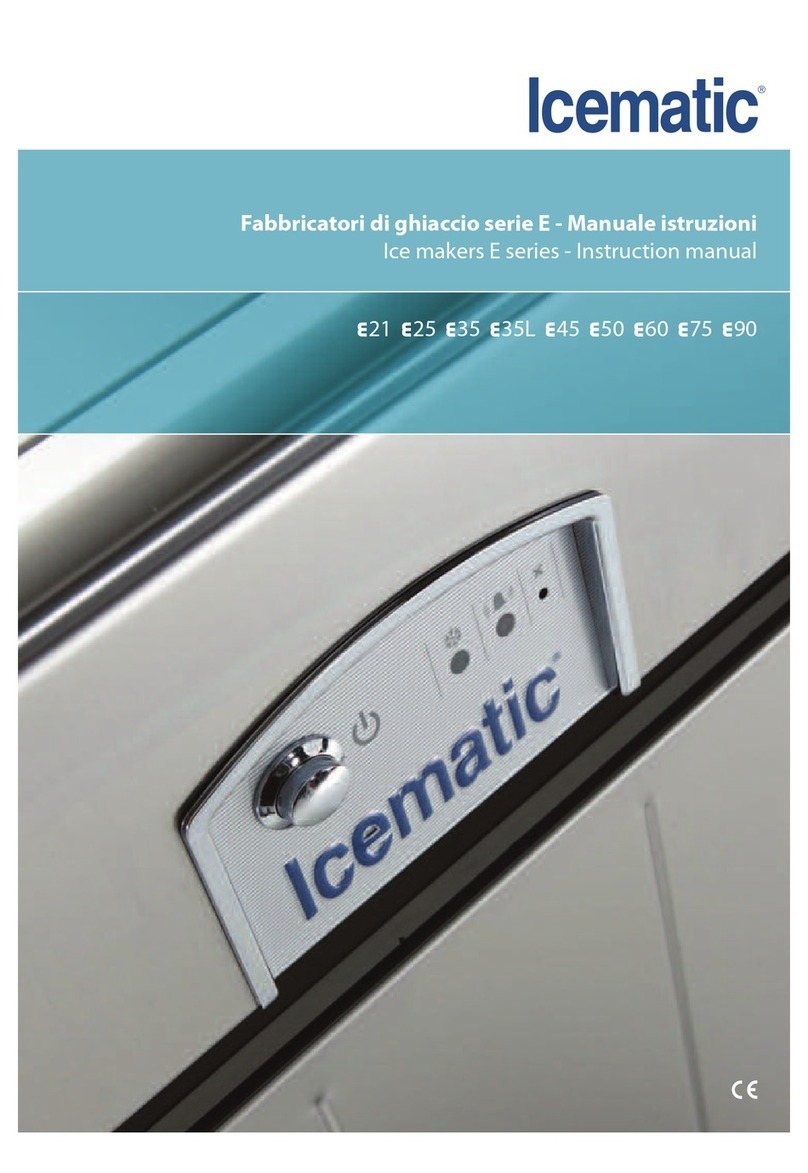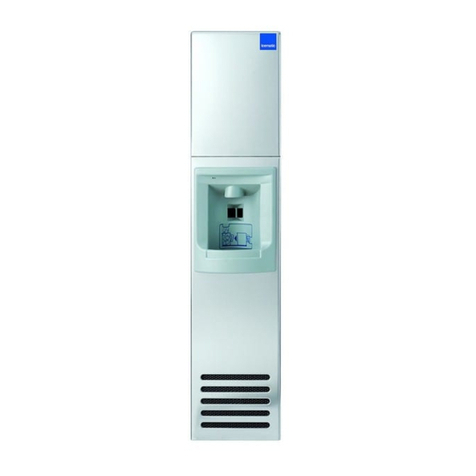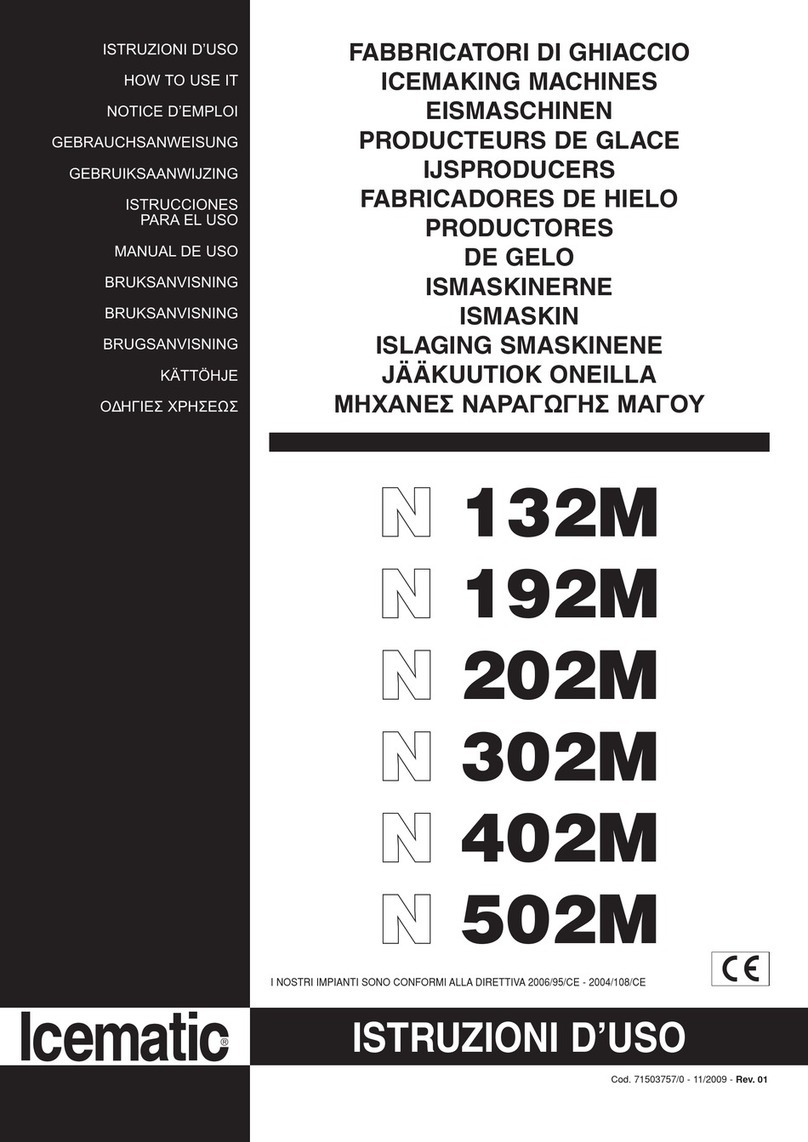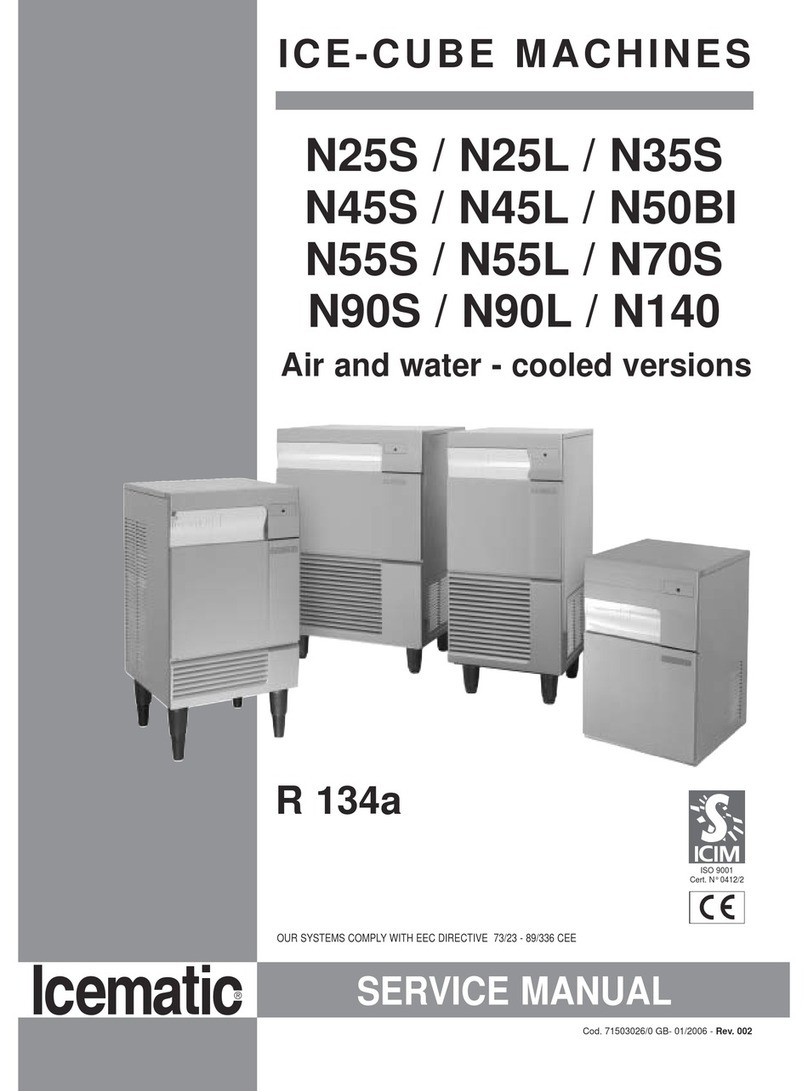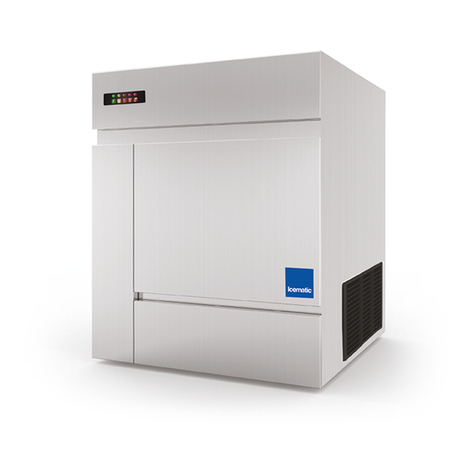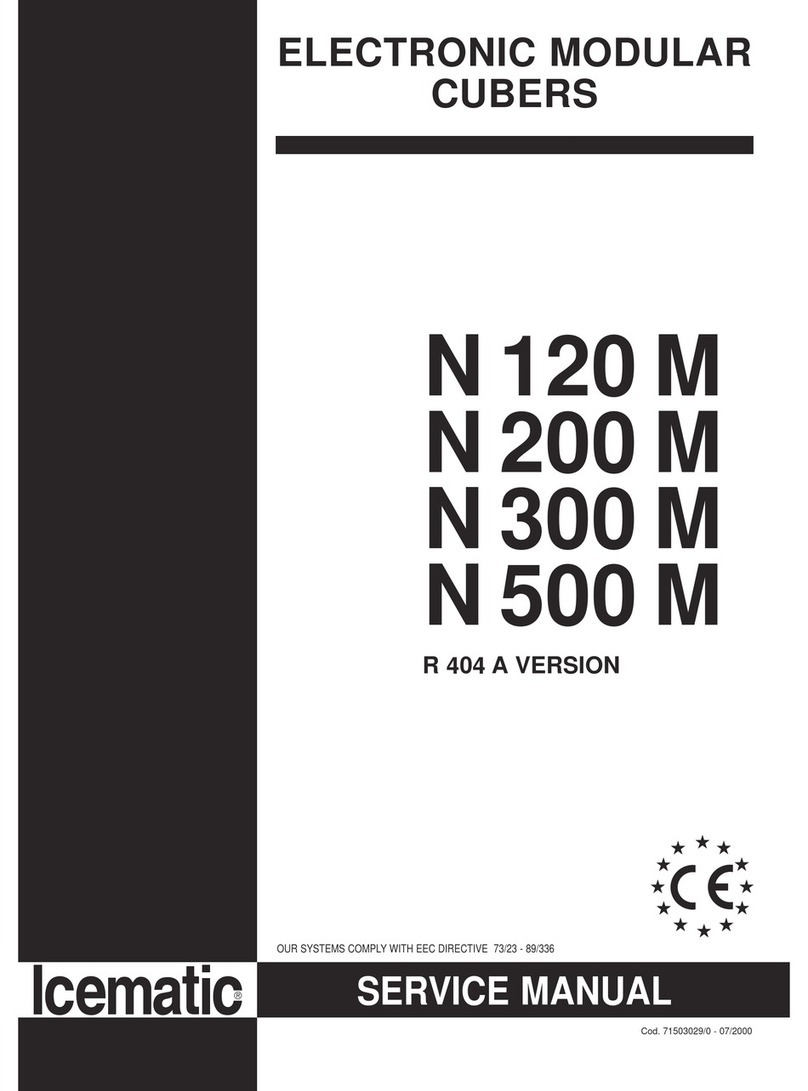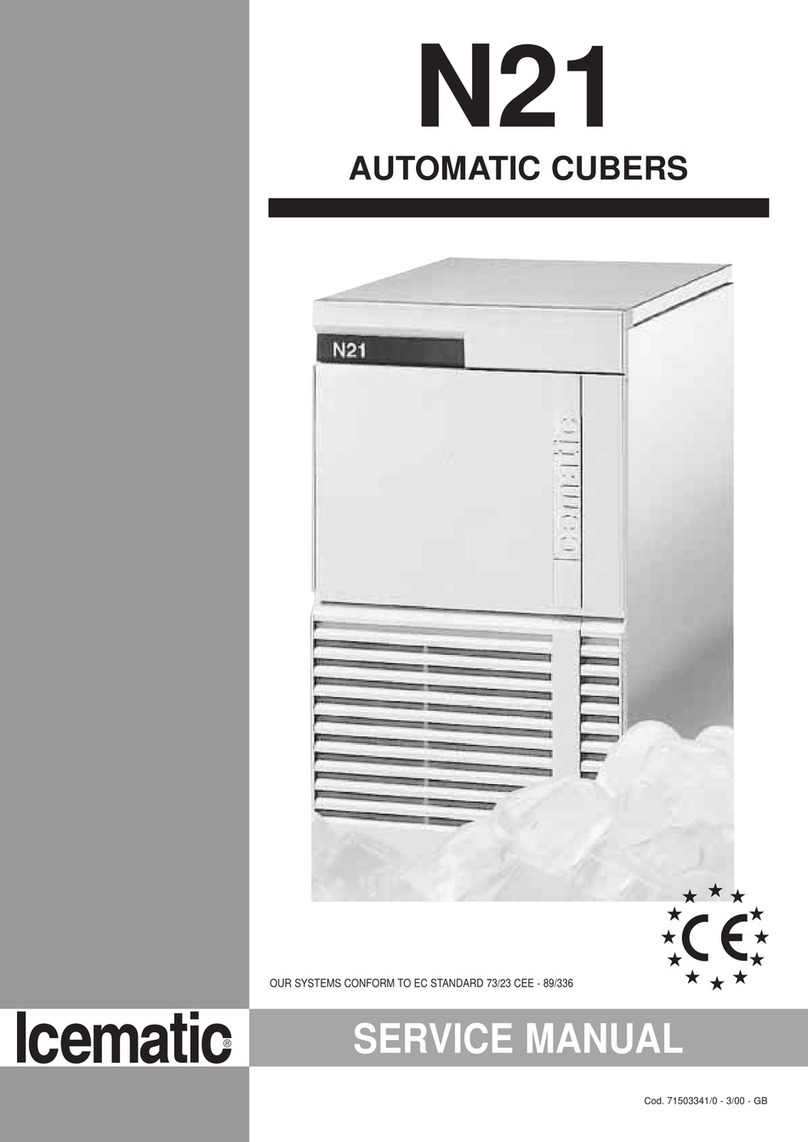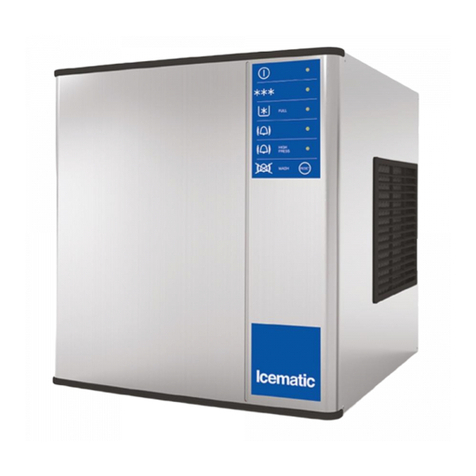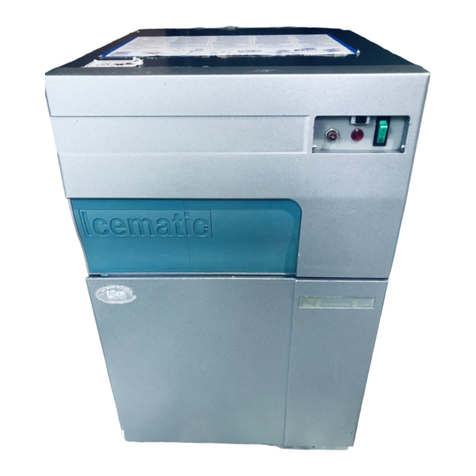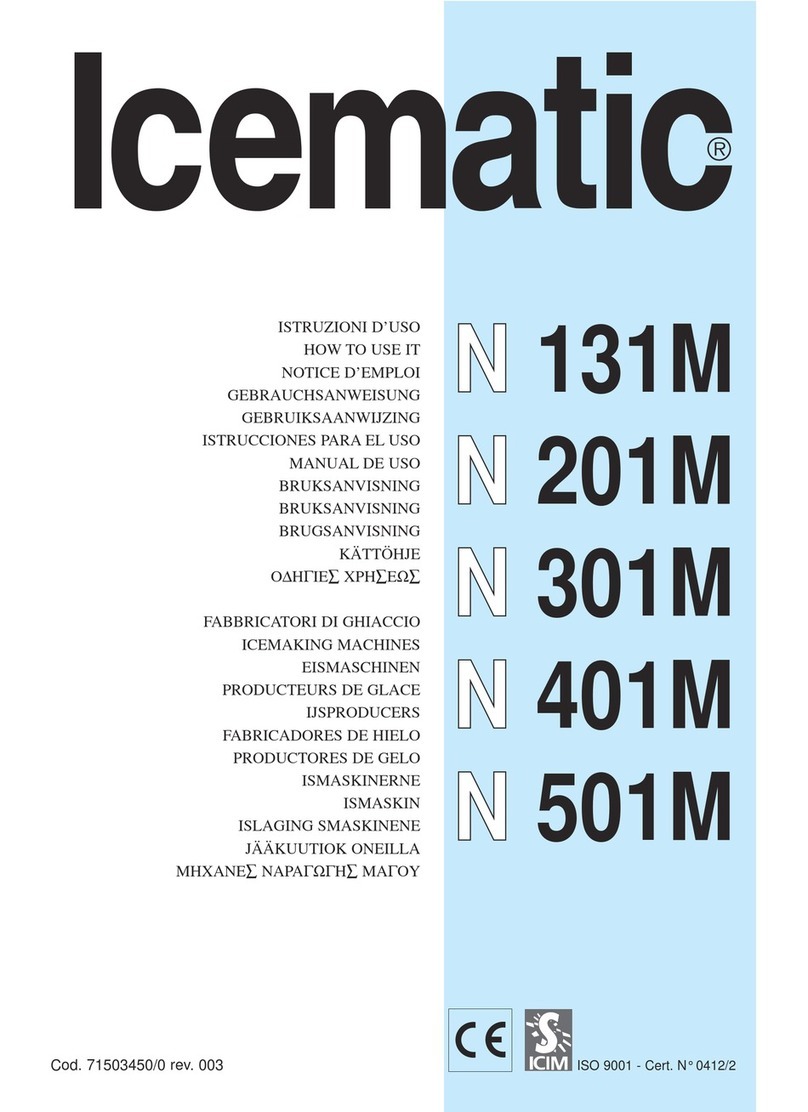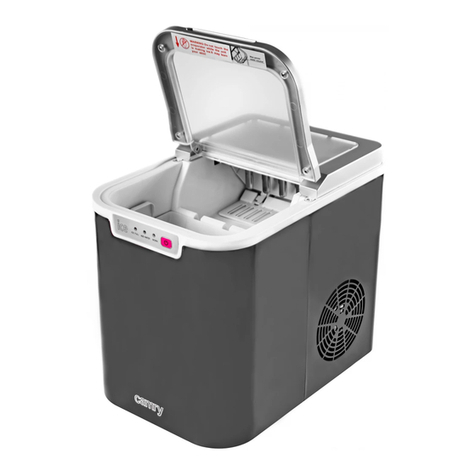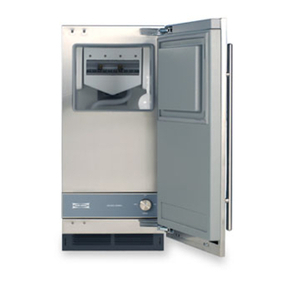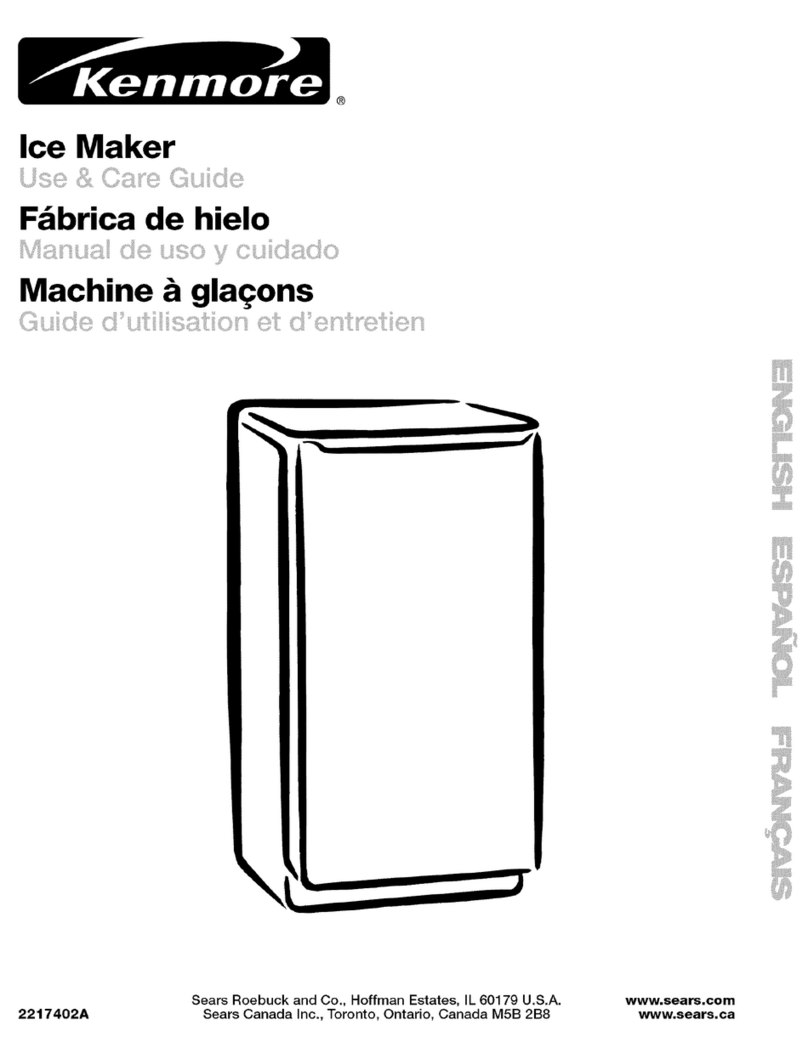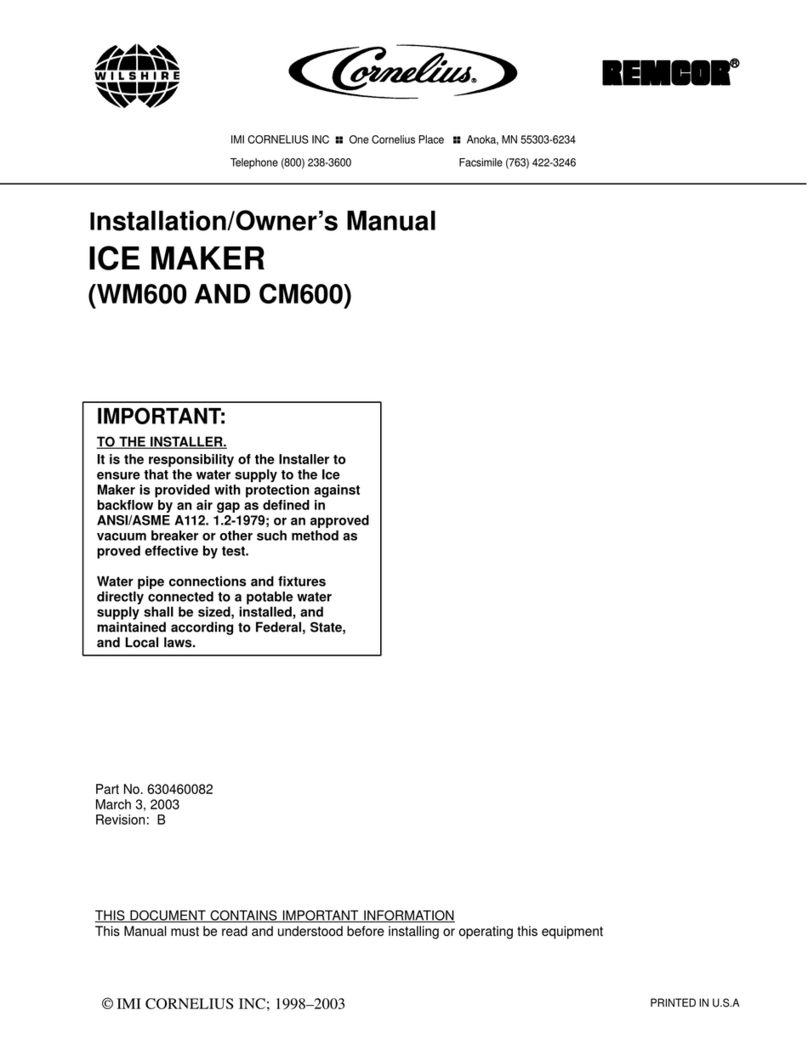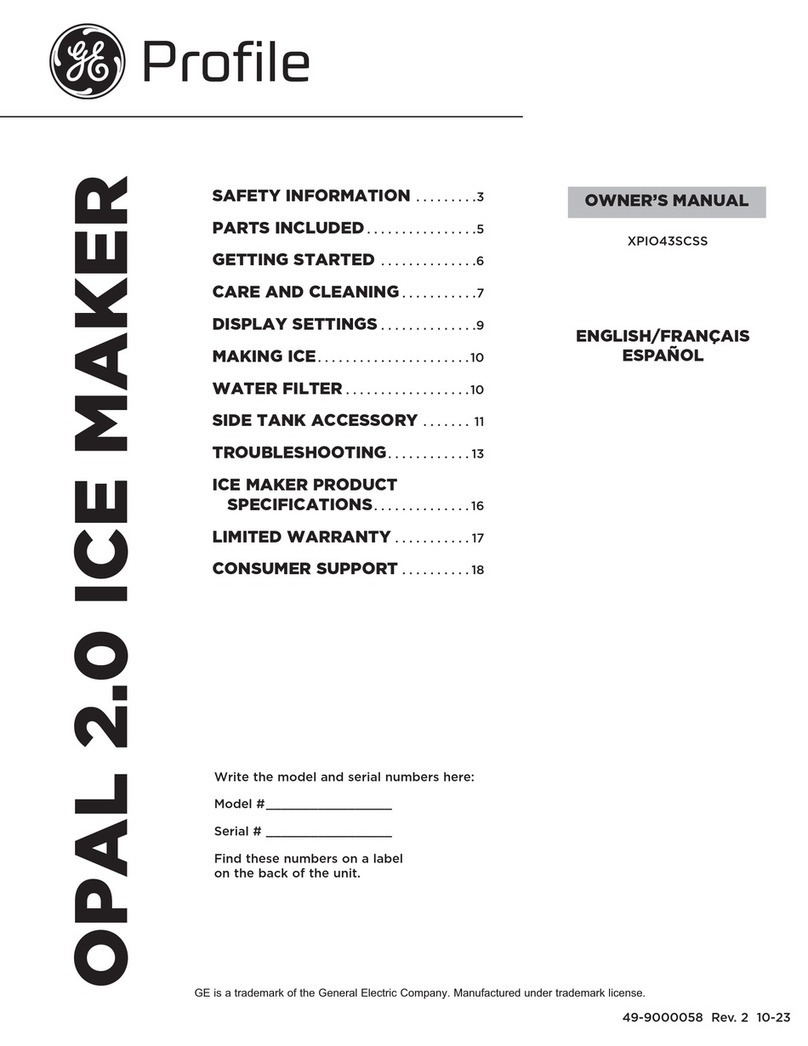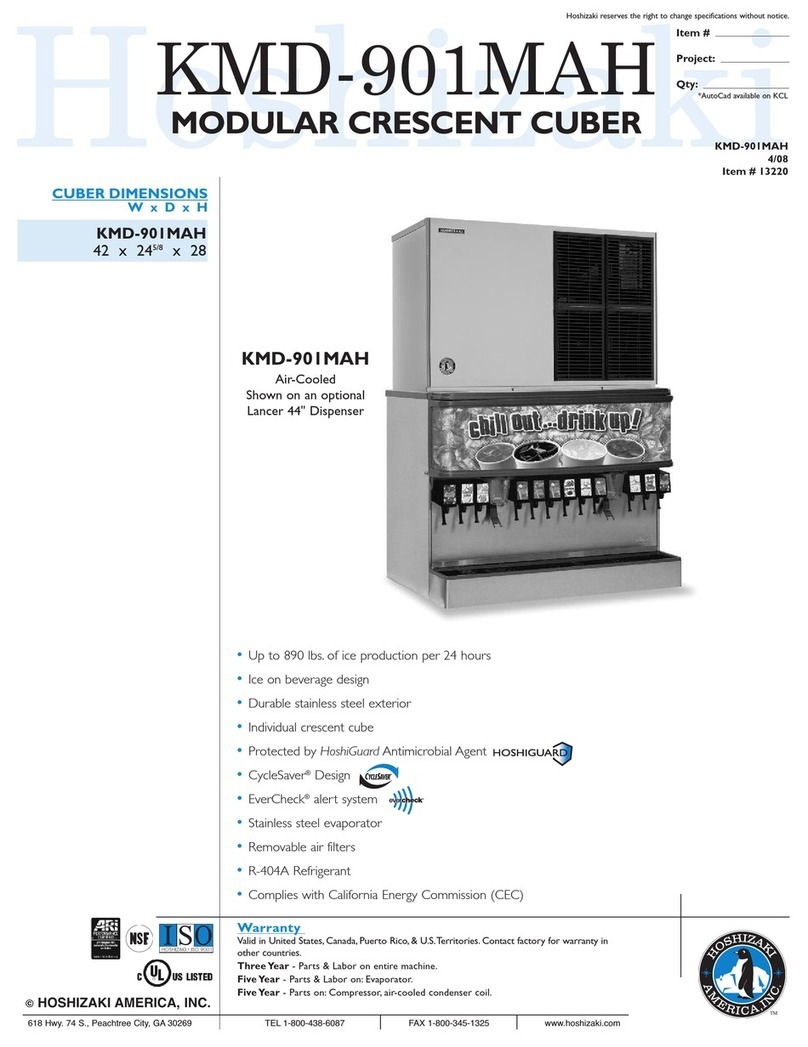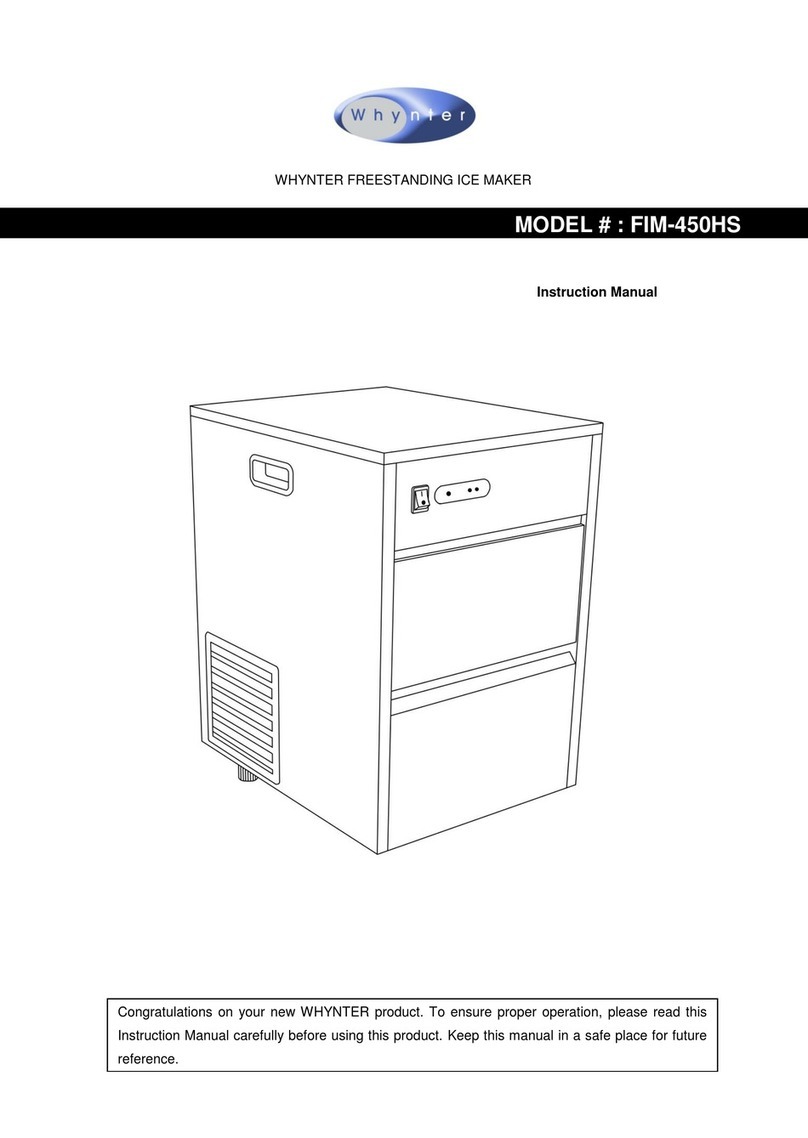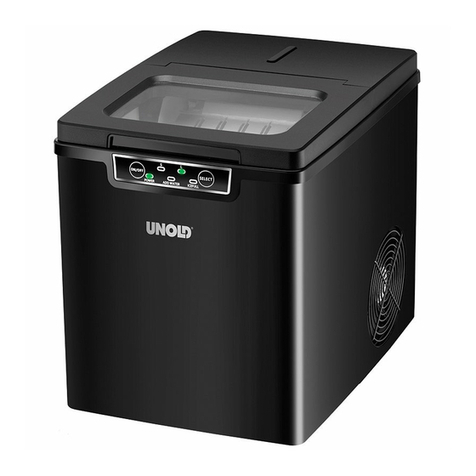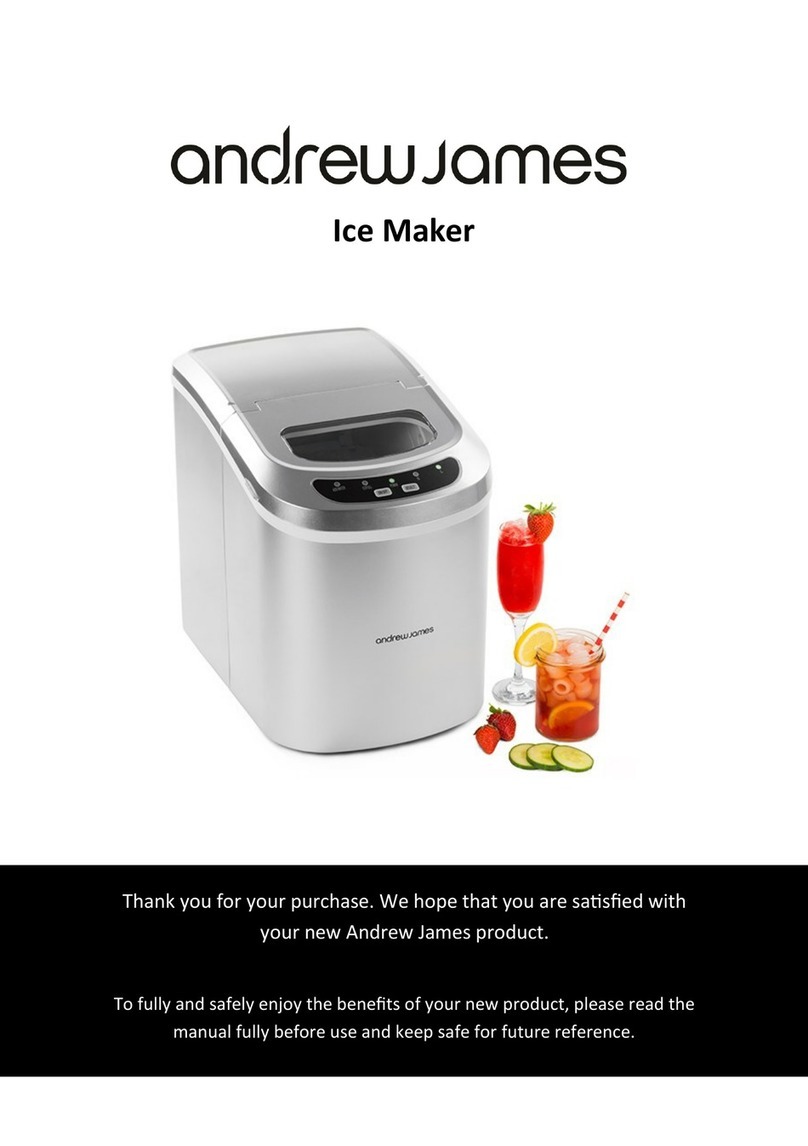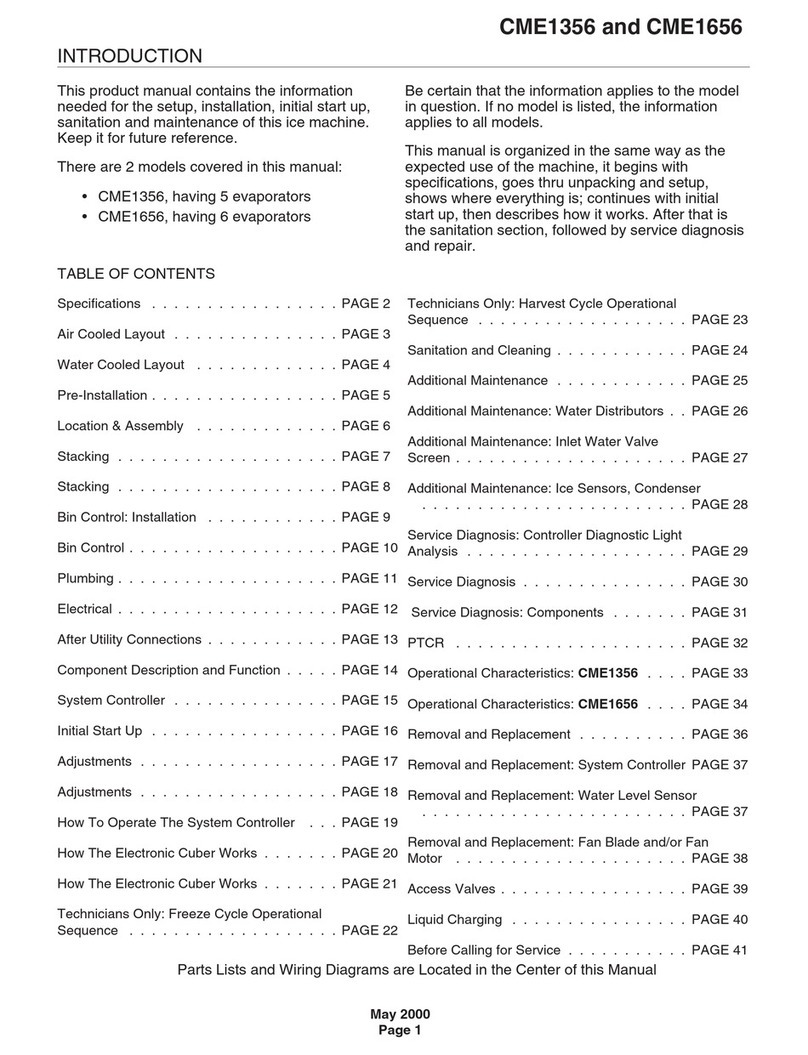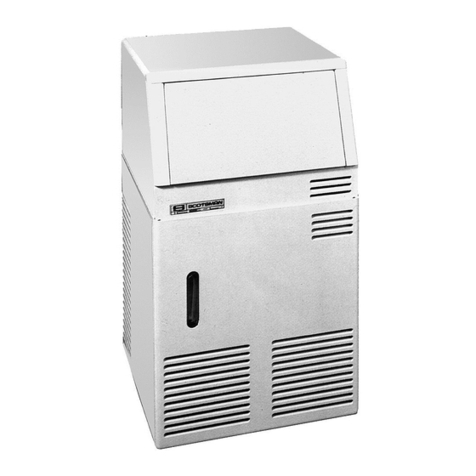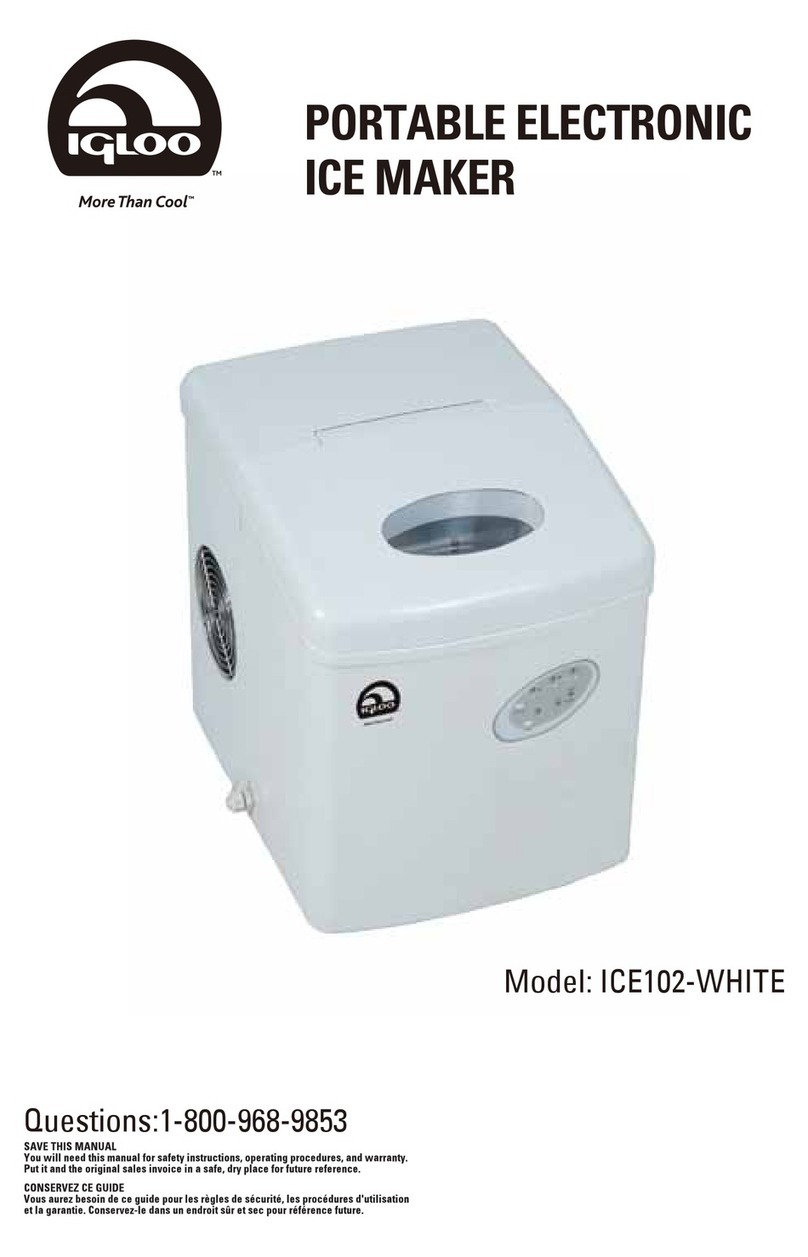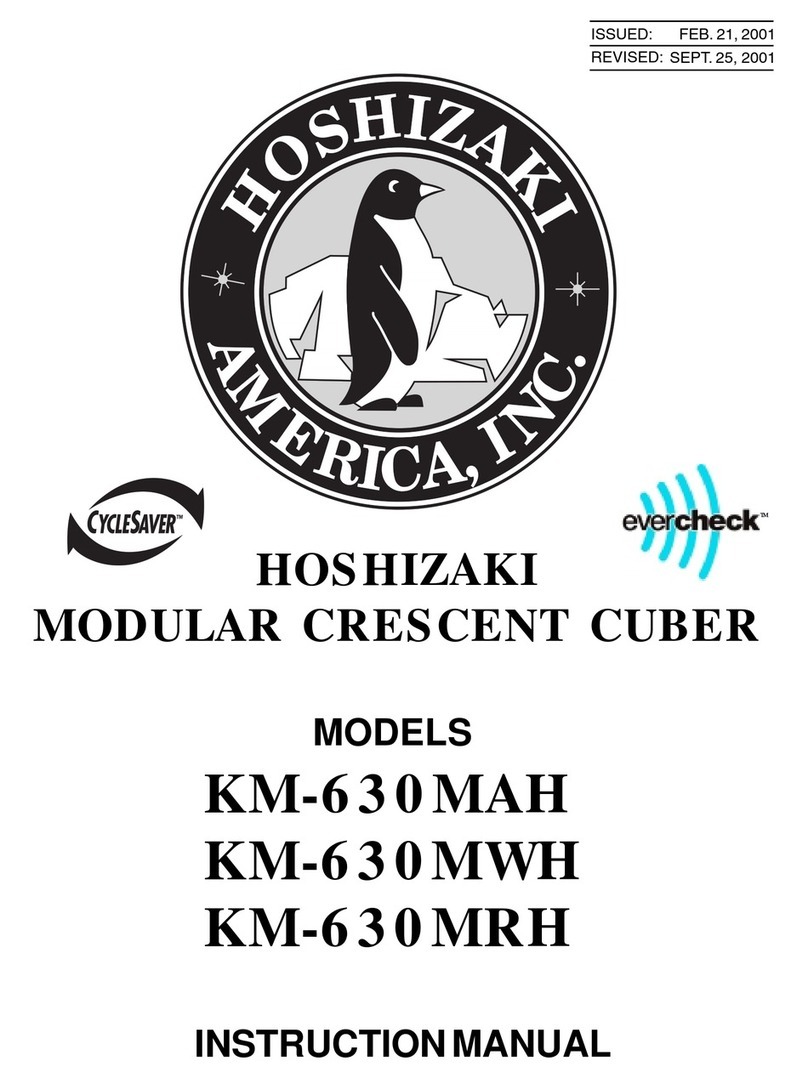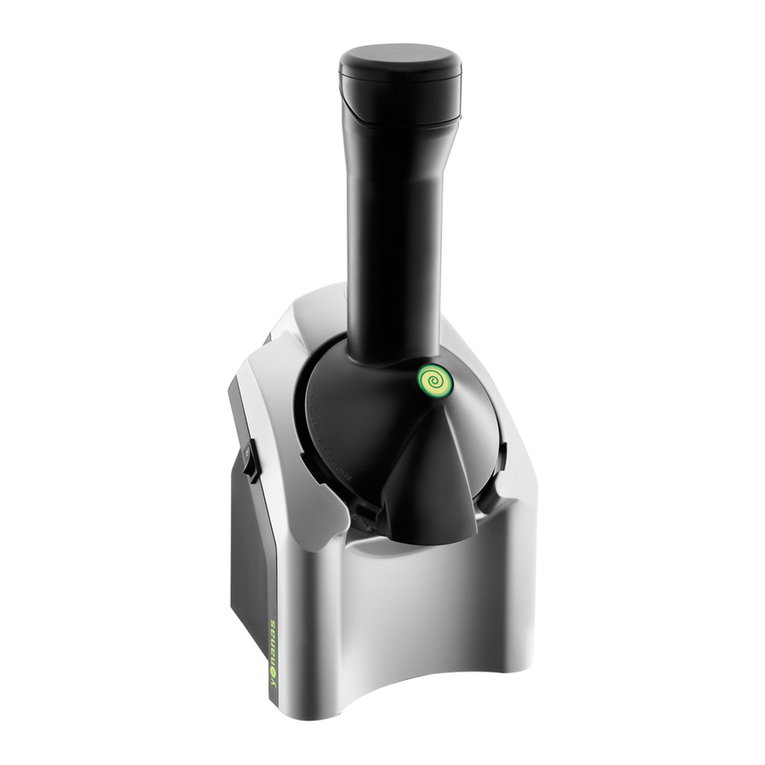T
5
NFORMAZ ON PER L “SERV CE”
LE SEGUENT OPERAZ ON DEVONO ESSERE EFFET-
TUATE SOLAMENTE DA PERSONALE QUAL F CATO DEL
NOSTRO D STR BUTORE “ CEMAT C” D ZONA (fig. 2).
1) Controllare che il rubinetto della rete idrica di alimenta-
zione sia aperto, quindi inserire la spina di alimentazione
elettrica della macchina nella presa e accendere l’interrut-
tore di linea predisposto; la macchina inizia in funziona-
mento automatico (fig. 14) dopo aver premuto il pulsante
ON/OFF di avviamento (fig. 22).
2) Controllare che l’acqua arrivi alla vaschetta, che il sensore
e/o il galleggiante arresti l’entrata prima del trabocco e che
non esistano perdite nell’impianto e nei condotti idrici. Il
normale livello d’acqua all’interno della vaschetta è a circa
5./.10 mm. dai bordi superiori. (fig. 17)
La regolazione del livello acqua può avvenire ruotando il
micro galleggiante o il sensore acqua sull’apposita feritoia
prevista sul supporto relativo, previo allentamento della
vite di fissaggio 1 (fig. 17). Tale regolazione deve avvenire
con alimentazione elettrica disinserita.
3) Verificare che non si producano vibrazioni anormali a
causa di viteria allentata.
4)
Nel caso di necessità di intervento per perdite d’acqua, ser-
raggio viteria od altro, arrestare sempre prima il produttore.
5) Controllare un ciclo di produzione ghiaccio verificando che
i cubetti vengano scaricati nel deposito.
6) Verificare la funzionalità della sonda deposito: appoggiando
un cubetto di ghiaccio sul bulbo all’interno del contenitore il
produttore dovrebbe arrestarsi entro 1 minuto e ripartire au-
tomaticamente dopo averlo tolto, in tempo poco superiore.
7) Rimontare il coperchio tolto in precedenza.
PUL Z A E MANUTENZ ONE
Per la pulizia della carrozzeria, é sufficiente usare un panno
inumidito con un prodotto specifico, privo di cloro, per acciaio
inossidabile.
N.B. Tutte le operazioni di pulizia e manutenzione devono es-
sere eseguite previo disinserimento dell’alimentazione elet-
trica dell’apparecchio.
PUL Z A DEL CONDENSATORE AD AR A
Per valorizzare al meglio il vostro produttore in termini di resa
e durata è necessario effettuare ogni settimana la pulizia del
filtro aria posizionato nella parte frontale del produttore (vedi
fig. 23). Per la rimozione del filtro è sufficiente estrarlo e la-
varlo con un getto di acqua tiepida e asciugarlo prima del ri-
montaggio.
Non utilizzare spazzole o oggetti contundenti per la pulizia del
filtro.
È assolutamente vietato far funzionare il produttore senza il fil-
tro dell’aria per evitare il malfunzionamento.
PUL Z A DEL F LTRO ENTRATA ACQUA
Chiudere il rubinetto d’intercettazione d’acqua all’apparecchio,
staccare il tubo entrata acqua e sfilare con una pinza la retina
filtrante situata sull’elettrovalvola entrata acqua. Pulire la re-
tina con getto d’acqua e rimontarla nella propria sede.
PUL Z A DEL CONTEN TORE
Estrarre il ghiaccio dal deposito. Pulire l’interno con una spu-
gna inumidita in acqua tiepida unita ad un poco di bicarbonato
di soda; sciacquare con acqua pura ed asciugare accurata-
mente.
l C CLO D LAVAGG O E SAN F CAZ ONE.
Per ovviare ai problemi dati dalla durezza dell’acqua di ali-
mentazione e quindi la formazione di impurità sulle parti e com-
ponenti a contatto con l’acqua, la macchina e’ stata dotata di
una funzione “Self Cleaning”. Tale funzione, grazie all’azione
pulente di un prodotto specifico, una bustina di prodotto in pol-
vere e la bottiglia dosatrice, permette di mantenere pulita e
igienizzata la macchina dal calcare e dalle incrostazioni.
Per garantite una buona pulizia del fabbricatore di ghiaccio si
consiglia di eseguire il ciclo di lavaggio almeno 3-4 volte al-
l’anno in funzione della durezza dell’acqua di alimentazione.
COME ESEGU RE L C CLO D LAVAGG O E SAN F CAZ ONE
.
Prendere le dovute precauzioni nel maneggiare l’acido citrico
mentre si prepara la soluzione (acqua+acido
citrico, vedi tabella) indossando guanti e oc-
chiali protettivi.
Spegnere la macchina. Togliere tutto il ghiaccio dal conteni-
tore. Servendosi del prodotto specifico e della bottiglia in pla-
stica, preparare la soluzione sciogliendo la polvere in acqua
tiepida (max. 40°C) secondo le quantità riportate nella tabella
allegata. Mescolare il tutto facendo attenzione che non si ve-
rifichino dei grumi. Accendere la macchina, premendo il pul-
sante ON/OFF e tenendo contemporanea-
mente premuto anche il pulsante di RESET
(fig. 22). Per premere il pulsante di RESET
utilizzare una spina di diametro adeguato al
foro sul quadro comandi.
Entrambi i leds lampeggiano velocemente.
Aprire lo sportello del deposito, attendere che
la bacinella ritorni in posizione di chiusura. In-
trodurre la canula nella bottiglia in tutta la sua
lunghezza nell’apposito foro (vedi fig. 24) e
scaricare tutta la miscela precedentemente
preparata, facendo pressione con le mani sulla bottiglia. Chiu-
dere lo sportello e ripremere il pulsante Reset per avviare il
ciclo di LAVAGGIO.
Una volta avviato il ciclo di lavaggio il lampeggio dei leds sarà
più lento. urante la funzione lavaggio provvedere a riscia-
quare abbondantemente il deposito.
La durata del ciclo di lavaggio e di circa 3 ore.
Una volta avviata la funzione anticalcare non è possibile in-
terrompere il ciclo di lavaggio. In caso di mancanza di ten-
sione, la macchina riprende da dove si era fermata.
Al termine del ciclo di lavaggio e risciacquo la macchina ri-
parte in ciclo freddo.
Per tutti gli interventi di manutenzione straordinaria e/o ripa-
razione (parti meccaniche, frigorifere, elettriche) che compor-
tino la regolazione e/o sostituzione di componenti, rivolgersi
sempre a un centro servizi autorizzato.
opo un lungo periodo di inattività si consiglia di eseguire un
ciclo di pulizia prima di iniziare la produzione di ghiaccio.
Quantitativi di acido citrico da miscelare con acqua
nella bottiglia per ottenere la miscela
MODELLO Q.T ACIDO CITRICO
E21-E25 200 gr.
E35 250 gr.
E45-E55 500 gr.
Se l’apparecchio dovesse rimanere inutilizzato per lunghi
periodi:
- disattivare la macchina
- togliere tutto il ghiaccio dal contenitore
- scaricare tutta l’acqua
- eseguire un’accurata pulizia
- lasciare lo sportello del contenitore leggermente aperto.
